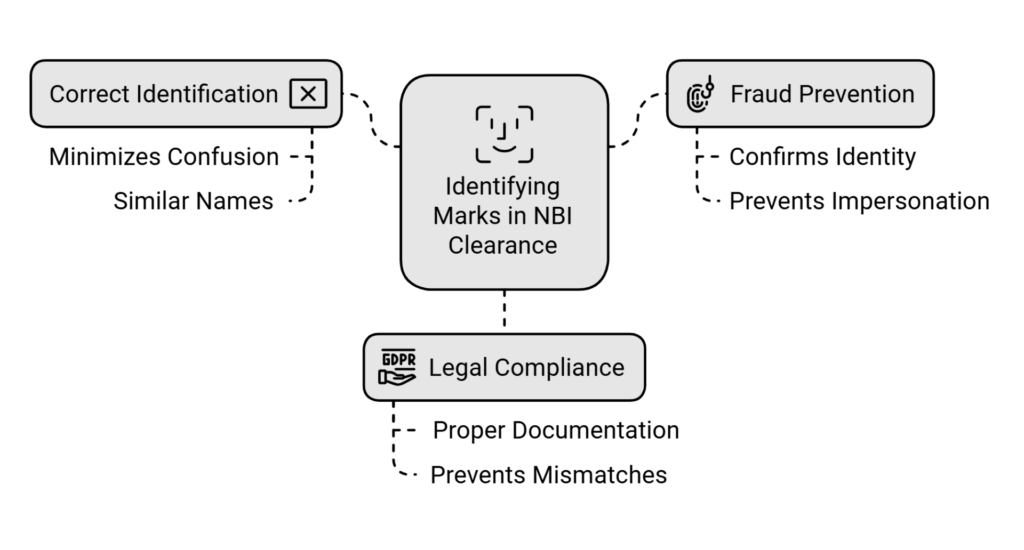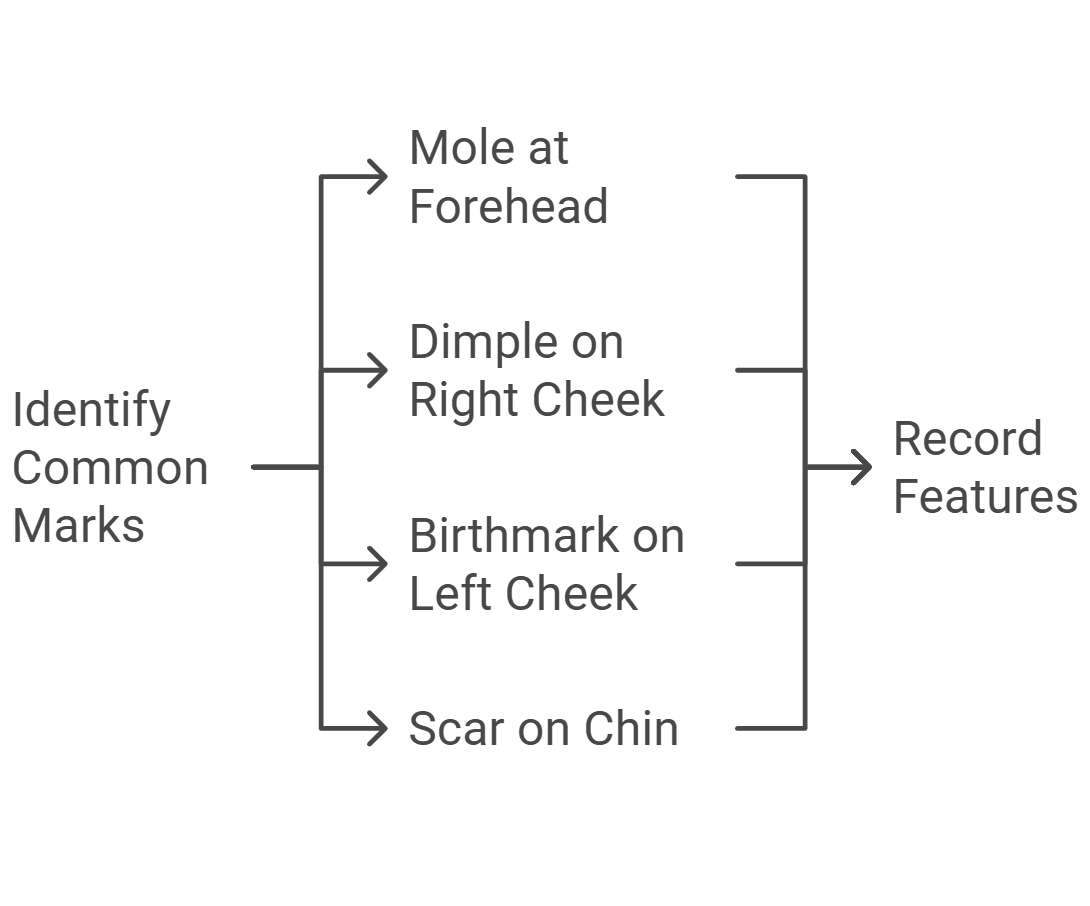What is Identifying Marks in NBI?
Identification marks is one of the important task, the NBI requires when requesting an NBI clearance in the Philippines. These are unique physical features an individual possesses that can differentiate him or her from others. Such marks include moles, birthmarks, scars, tattoos, and other prominent features.
These marks are essential in verifying an applicant’s identity and the possible mix-up with criminal records.
Why Does Identifying Marks Help to Identify Individuals?
Identifying marks is a very important factor in the application for NBI clearance for the following reasons

Correct Identification: It minimises confusion, especially among persons with similar names.
Fraud Prevention: It helps to confirm one’s identity, which helps to prevent impersonation.
Legal Compliance: Proper documentation ensures smooth processing of legal applications, preventing mismatches.
Common Examples of Identifying Marks
The following may be recorded as common marks identified in applicants:
A mole at the forehead: A dark spot that is usually round and can be spotted.
Dimple on the right cheek: A dimple on the right cheek that is attractive and a bit unusual feature.
A birthmark on the left cheek: A birthmark on the left cheek is another distinguishing feature that occurs naturally.
A scar on the chin: Scars on the chin can appear as a result of several injuries in the past. There has been much emphasis on recording these features to ensure the correct profile identification for each applicant.

How NBI Records Identifying Marks
In case there are any identifiable marks on the profile of the applicant, he/she has to mention them during the clearance process. This is then cross-verified with the other records to endorse the profile of the applicant. Thus, advanced technologies such as digital imaging ensure accuracy in these technical processes.
Identifying Marks and Privacy Concerns
These marks are, however, very important in the process of law enforcement, but their storage does raise privacy issues. To protect people’s data, there are systems such as encryption and access restrictions.
Conclusion
As such, these identifying marks become part and parcel of the NBI clearance process since they assist in identity verification and certainty. There are several identification features of people, including moles, scars, and tattoos, that spare cross-checking with a chance of duplicate fingerprints. Proper submission of these identifying marks provides efficiency during clearance processing as well as boosts individual and national security.
Frequently Asked Questions (FAQs)
I have identifying marks; can I still be issued NBI clearance?
Yes, having identifying marks does not hinder the issuance of NBI clearance, as it is simply to observe the existence of such marks on an applicant. Having those marks is only a problem when there are pending unresolved cases against the marks or photographs in the database for cases of forensic investigation and prosecution in the courts.
What happens if I miss mentioning a mark that could be useful for my identification when I am making an NBI application?
All the visible marks have to be reported accurately. If you forget one, it might ruin the entire profile or, worse, take longer than expected to complete the process. Just cross-check the details of your application to eliminate the chances of making errors when submitting it.
In an NBI clearance application, is a tattoo classified as a mark of identification?
Tattoos are a case of identifying marks; tattoos are recorded as part of the profile because they are peculiar to each person and help in differentiating one person from another.
